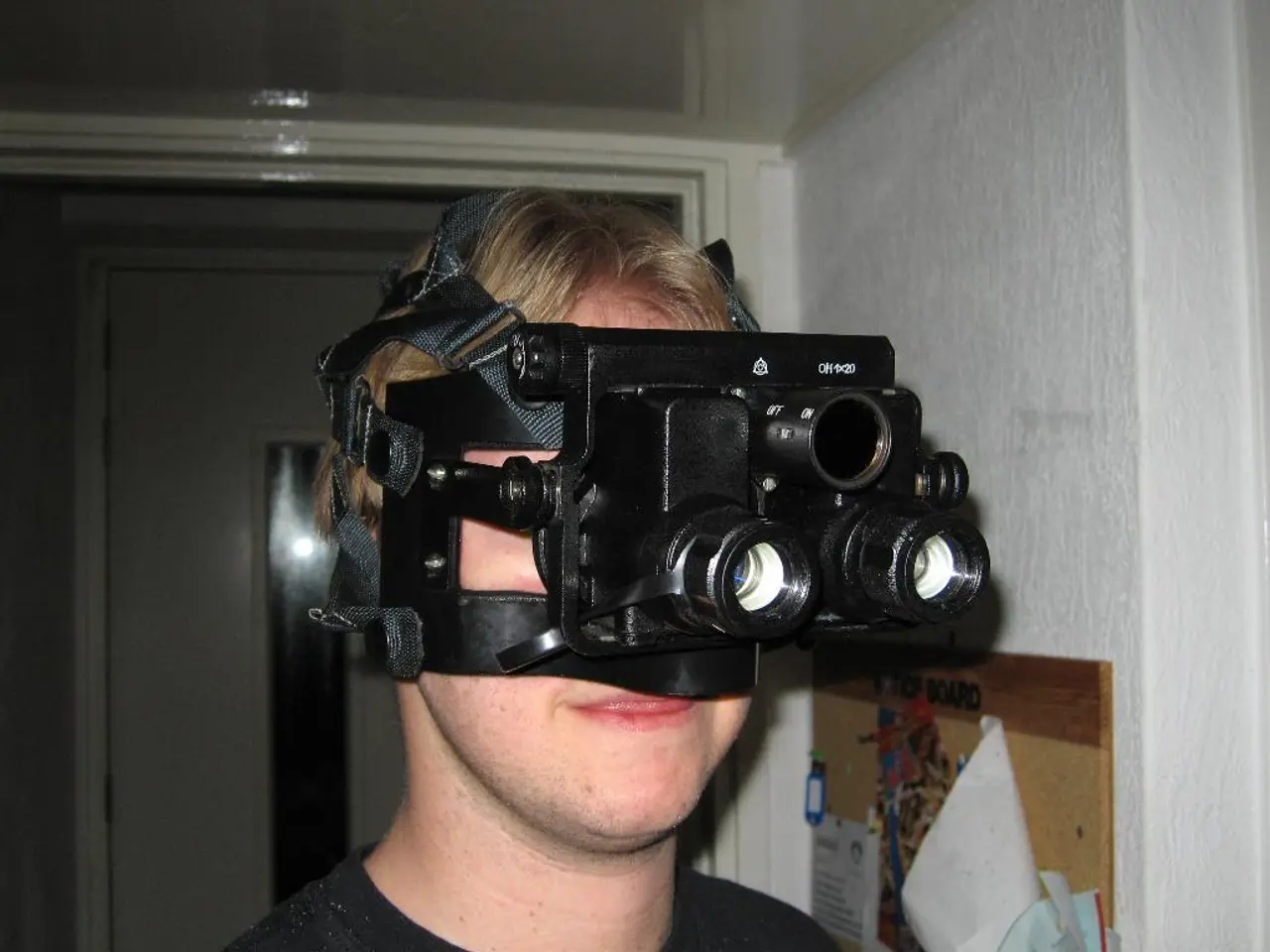Exploring Innovative Methods in Virtual Reality Software Creation
In the ever-evolving world of virtual reality (VR), 2025 marks a significant leap forward in app development techniques. This year, the focus is heavily on optimization, performance tuning, and the integration of innovative technologies.
Optimization and Performance Tuning
Developers are embracing techniques such as Foveated Rendering, which dynamically adjusts resolution based on the user's gaze, saving rendering resources by focusing high detail on the user's focus while lowering quality in peripheral vision. Level of Detail (LOD) Management, Texture Atlases, Efficient Shaders and Baked Lighting, Low-Polygon Models and Texture Compression, Profiling, and Cross-Device Testing are other strategies being employed to boost rendering efficiency and performance.
Innovative Technologies
The integration of Eye-Tracking and Haptic Feedback technologies is transforming VR experiences. Eye-tracking sensors enhance immersion and enable more efficient rendering, while haptic systems improve the sense of connection to virtual environments. The advent of Spatial Computing, a blend of AR, VR, AI, and 3D environments, is revolutionising interaction paradigms within VR apps. Developers are also embedding AI-driven dynamic content generation and intelligent virtual agents in VR to create more interactive and responsive virtual environments.
User Experience and Industry Trends
The emphasis is on mixed reality (MR) experiences, combining VR with real-world elements for practical and social applications beyond gaming. Privacy-first development is rising in importance alongside VR’s mainstream growth, ensuring compliance with regulations like GDPR and CCPA while maintaining user trust. Mobile VR development targets maintaining smooth frame rates (above 60 FPS) to reduce user dropout, balancing visual fidelity with performance constraints.
The Future of VR Development
The future of virtual reality is guided by continuous innovation, with emerging technologies such as eye-tracking and foveated rendering promising more intuitive interactions and performance gains. Spatial sound design, gesture control integration, and advanced techniques in VR app development are simplifying complex interactions for users, focusing on visually appealing and highly functional interfaces within the three-dimensional space of VR.
Popular engines like Unreal Engine and Unity are at the forefront of these advancements. Unreal Engine offers tools for simulating physics, creating dynamic lighting, and authoring complex particle systems for VR applications. Unity, on the other hand, is favoured for its extensive support for VR platforms, user-friendly interface, and a broad range of optimized VR tools.
In conclusion, 2025 VR app development emphasizes cutting-edge rendering optimizations, along with haptic and eye-tracking technologies to boost immersion. At the same time, spatial computing and AI enhance interactivity and real-world integration, supported by continuous improvements in performance profiling and privacy compliance frameworks.
- To boost immersion and efficiency, developers are employing Foveated Rendering, a technique that dynamically adjusts resolution based on the user's gaze, along with strategies like LOD Management, Texture Atlases, Efficient Shaders and Baked Lighting, Low-Polygon Models and Texture Compression, Profiling, and Cross-Device Testing.
- The integration of Eye-Tracking and Haptic Feedback technologies is transforming VR experiences, with eye-tracking sensors enhancing immersion and enabling more efficient rendering, while haptic systems improve the sense of connection to virtual environments.
- VR development focuses on mixed reality experiences, combining VR with real-world elements, and Gesture Control Integration to simplify complex interactions for users, with spatial sound design adding to the immersive experience.
- Unreal Engine and Unity, popular engines for VR app development, offer tools for simulating physics, creating dynamic lighting, authoring complex particle systems for VR applications, and extensive support for VR platforms, respectively.
- The future of VR is guided by continuous innovation, with the integration of emerging technologies such as eye-tracking, foveated rendering, and spatial computing, promising more intuitive interactions and enhanced performance in VR.




